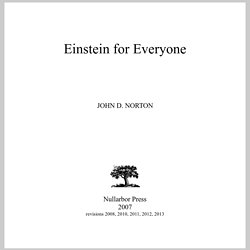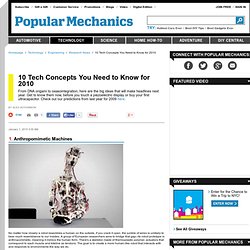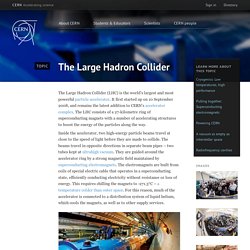

Einstein for Everyone. Einstein for Everyone Nullarbor Press 2007revisions 2008, 2010, 2011, 2012, 2013 Copyright 2007, 2008, 2010, 2011, 2012, 2013 John D.

Norton Published by Nullarbor Press, 500 Fifth Avenue, Pittsburgh, Pennsylvania 15260 with offices in Liberty Ave., Pittsburgh, Pennsylvania, 15222 All Rights Reserved John D. An advanced sequel is planned in this series:Einstein for Almost Everyone 2 4 6 8 9 7 5 3 1 ePrinted in the United States of America no trees were harmed web*bookTM This book is a continuing work in progress.
January 1, 2015. Preface For over a decade I have taught an introductory, undergraduate class, "Einstein for Everyone," at the University of Pittsburgh to anyone interested enough to walk through door. With each new offering of the course, I had the chance to find out what content worked and which of my ever so clever pedagogical inventions were failures.
At the same time, my lecture notes have evolved. This text owes a lot to many. I i i. Scientists may have found a new state of matter. 10 Tech Concepts You Need to Know for 2010. 1.

Anthropomimetic Machines No matter how closely a robot resembles a human on the outside, if you crack it open, the jumble of wires is unlikely to bear much resemblance to our insides. A group of European researchers aims to bridge that gap--its robot prototype is anthropomimetic, meaning it mimics the human form.
There's a skeleton made of thermoplastic polymer, actuators that correspond to each muscle and kiteline as tendons. The goal is to create a more human-like robot that interacts with and responds to environments the way we do. 2. Yesterday's fuel cells, like those seen here on Spacelab, require a hydrogen infrastructure. Coal is dirty, and fuel cells run on hydrogen--that's the conventional wisdom. 3. 4. Scientists at Caltech have been folding microscopic strands of DNA into interesting shapes for the past few years. 5.
(Illustration by Leandro Castelao) Online physics-based games. Eric Weisstein's World of Physics. Physics.org. Physics Flash Animations. We have been increasingly using Flash animations for illustrating Physics content. This page provides access to those animations which may be of general interest. The animations will appear in a separate window. The animations are sorted by category, and the file size of each animation is included in the listing. Also included is the minimum version of the Flash player that is required; the player is available free from The categories are: In addition, I have prepared a small tutorial in using Flash to do Physics animations.
LInks to versions of these animations in other languages, other links, and license information appear towards the bottom of this page. The Animations There are 99 animations listed below. Other Languages and Links These animations have been translated into Catalan, Spanish and Basque: En aquest enllaç podeu trobar la versió al català de les animacions Flash de Física. Many animations have been translated into Greek by Vangelis Koltsakis. Lectures. Imagining the Tenth Dimension - A Book by Rob Bryanton. Science in Seconds. The Integrated Circuit.
Lists of Nobel Prizes and Laureates The Integrated Circuit Play the Techville Game About the game Integrated circuits, also called "chips", are electronic circuits where all the components (transistors, diodes, resistors and capacitors) has been manufactured in the surface of a thin substrate of semiconductor material.

Read More » The Nobel Prize The 2000 Nobel Prize in Physics was awarded for the invention of the integrated circuit. Reading The History of the Integrated Circuit » Share this: Share on facebook Share on google_plusone_share Share on twitter More Sharing Services5 Share on email To cite this pageMLA style: "The Integrated Circuit". Recommended: The Legacy of Alfred Nobel On 27 November 1895 Alfred Nobel signed his last will in Paris. Play the Blood Typing Game Try to save some patients and learn about human blood types! HyperPhysics. The Large Hadron Collider.
The Large Hadron Collider (LHC) is the world’s largest and most powerful particle accelerator.

It first started up on 10 September 2008, and remains the latest addition to CERN’s accelerator complex. The LHC consists of a 27-kilometre ring of superconducting magnets with a number of accelerating structures to boost the energy of the particles along the way. Inside the accelerator, two high-energy particle beams travel at close to the speed of light before they are made to collide. The beams travel in opposite directions in separate beam pipes – two tubes kept at ultrahigh vacuum. They are guided around the accelerator ring by a strong magnetic field maintained by superconducting electromagnets.